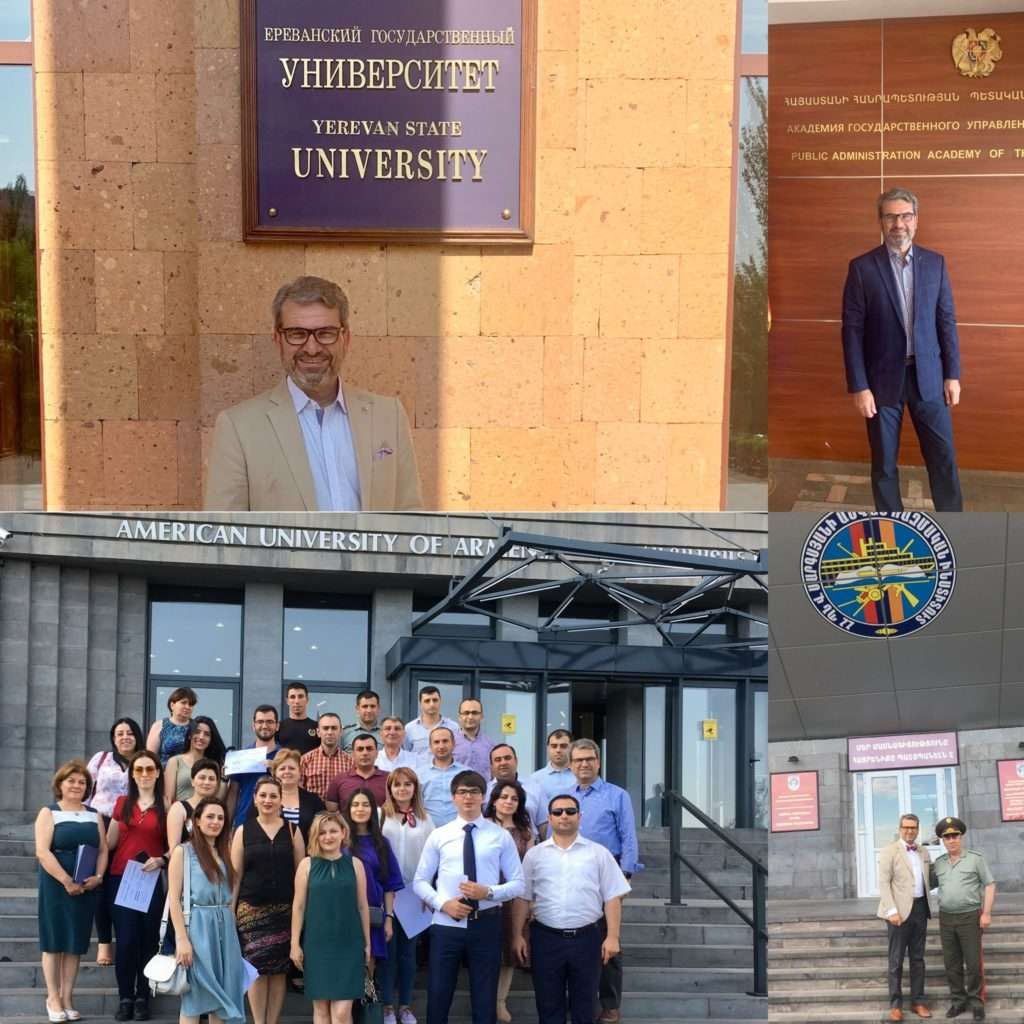The cease-fire in the Caucasus is not a recipe for long-lasting peace. If history taught us anything, the cease-fire of 1994 gave Azerbaijan 26 years to regroup, learn, organize, and strategize. Armenia and Artsakh do not have the same 26 years’ luxury, but only five years to accomplish the same goals.
The dreadful and ill-conceived cease-fire agreement of November 10, 2020 allows President Putin and his Russian Army to control the South Caucasus for the time being and five years. As someone who studied, lived and understands Armenia’s enemies’ ideological ambitions, I do not doubt that given the same circumstances, we will revisit today’s reality in 5 years. Since we cannot control or change them, we must change what is broken in Armenia’s governance system and strategy.
In my next series of blog articles, I will focus on Armenia’s governance, resilience in institutions, and strategic planning. Especially all this in the context of mounting a robust defense apparatus in Armenia not to seek war but peace.
My work in Armenia
This year would have been seven years in a row that I teach and learn in Armenia’s civilian and military Universities. While I am not privy to any “national secrets,” I interacted with government, military, and academic leaders to observe and learn the status quo. In return, I humbly teach researched theories and best practices to help improve governance, ethics, and leadership skills. While progress has been slow, there is hope born out of today’s challenges, which allow us to adapt and change at warp speed. We must do this to honor the memories of those who made the ultimate sacrifice (some of them my friends) to defend their ancestral homeland during the 44 days of Azeri aggression, which started on September 27, 2020.

By all accounts, the “Velvet Revolution” was part of that change necessary to help Armenia shed its oligarchic past. Without a doubt, this oligarchic past is partly responsible for Armenia’s capitulation today. In a previous article, I wrote, “The truth is that Armenia’s strategic interests have been compromised years ago by various oligarchs, who exploited strategic assets like energy, defense, telecommunication, etc. for their self-interests and the interests of their foreign partners.”
I still believe my previous blog is an accurate assessment. Armenia’s current administration’s challenge is what it did not do to remedy this weakness, which her enemies exploited. The lack of additional reforms and strategic planning for national security may well force the current Armenian administration to fail. While it is not wise to substitute what is in place without a better replacement plan, the Armenian people’s disappointment may make the pressure too heavy to bear.
My observations
Part of the problem in Armenia’s governance is in her constitution as a multi-party democratic system. There is nothing wrong with having multiple parties to compete to make Armenia better. Except that for a country of fewer than 3 million people (practically smaller in population than Los Angeles), not counting the dissolved parties, there were approximately 84 registered political parties in Armenia as of 2019. Eleven of them entered Armenia’s Parliamentary elections in 2018. Since that election, six political parties are at the National Assembly.
Moreover, political parties in Armenia are personality-based. These are individuals focused on ideological power rather than the public or national interest. The concept is a remanence of the old Soviet model with top-down hierarchies with very little room for internal debate. Except for a few newer parties, the party chairman is the single most influential individual. These parties do not operate in the true spirit of democracy.
Unfortunately, this party system is not conducive to transparency and accountability. There are pro-government parties in this system that function to remain in power and opposition parties seeking to replace them. Autocratic systems and mentalities guide the parties and the government.
Armenia has one main national interest now. It is time for consolidation behind this national interest to govern for the future and create an effective public institution based on values, ethics, transformational leadership, innovation, and strategic planning.
What next?
In my future blog articles, I will reflect on the creation of an effective public institution. This topic was part of our research project with my graduate students for the United Nations, where I also help build public administration capacity. Armenia does not need infighting or political opportunism, but she needs transformational leaders willing to put the nation’s interest before their political interests. I want to be clear that it is not my intent to prefer one party over the other. Or do for Armenian citizens what they must do for their country. However, I intend to remind them that they have about five years to develop a sound strategic plan to survive. This plan starts with a strong diplomatic push to cement the recognition of Artsakh worldwide now.

Frank V. Zerunyan is a Professor of the Practice of Governance at the University of Southern California (USC) Sol Price School of Public Policy (USC Price) and Director of Executive Education at USC Price Bedrosian Center on Governance. Professor Zerunyan oversees USC’s Reserve Officers’ Training Corps (ROTC) as the Director and University Liaison for the U.S. Air Force, Army, Naval Reserves ROTC, and Nautical Science Programs.
Professor Zerunyan’s principal areas of expertise include governance, public-private partnerships, civic and ethical leadership, land use, medical regulation, negotiation, and executive education. He lectures locally and globally to build capacity and foster leadership among public executives worldwide. He is the author of books, book chapters, and many short articles published nationally, internationally, and on USC Price’s “Faculty Perspectives.” Professor Zerunyan is often quoted in the media and is a USC resource for journalists as an expert in governance and leadership. He is also an expert on public administration at the United Nations Innovation Branch (formerly Capacity Building Branch).
For his influential advisory role in the Republic of Armenia, he was awarded LL.D. Doctor of Laws – Honoris Causa by the Public Administration Academy of the Republic of Armenia. Professor Zerunyan designs curricula and teaches at the American University in Armenia, Yerevan State University, and the Vazgen Sargsyan Military University in Armenia, with an honorary rank of colonel. He also teaches for the U.S. Navy at the U.S. Naval Service Training Command.
Professor Zerunyan serves on the editorial boards of the Public Administration Scientific Journal for the Republic of Armenia and the Ukrainian Law Review. He is on the board of councilors of Anahuac University Law School, Xalapa, Mexico (Consejo Consultivo de la Escuela de Derecho).
Professor Zerunyan earned his Doctor of Jurisprudence (Doctor of Laws) degree from Western State University College of Law and his Bachelor of Arts degree from California State University Long Beach. He also completed his advanced legal education in Corporate Taxation at the University of Southern California Law Center (USC Gould). He is a graduate of the California League of Cities’ Civic Leadership Institute.
Professor Zerunyan, trained and practiced as a lawyer, is a four-term Mayor and Councilmember in the City of Rolling Hills Estates, California. He serves on several city, county, and regional policy boards and committees. He was also a gubernatorial appointee under Governor Schwarzenegger, serving 38 million medical consumers on the Medical Board of California.

